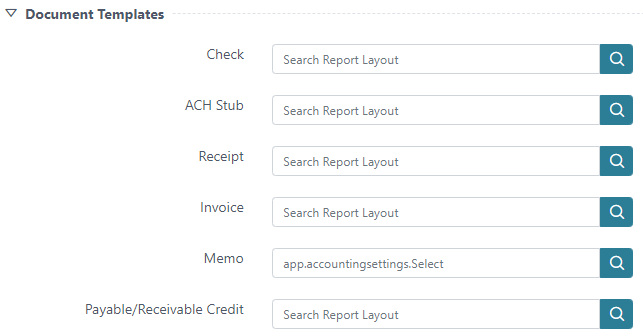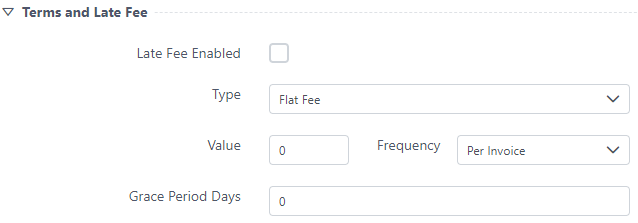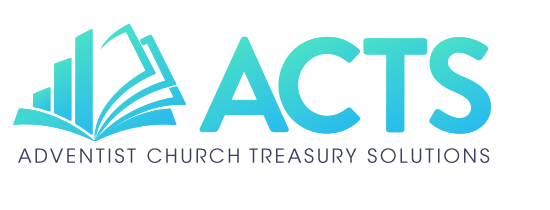In Accounting Settings, you are able to manage the Department Allocation, Reconciliation, Journal, Accounts Payable & Receivable, Checks, Document Templates, Terms and Late Fee, and Fiscal Year settings. Many of these items will be setup initially for the organization but can be reviewed and updated as needed.
![]()
The system is setup to facilitate department allocations or transfers between departments in the Department Allocation screen. There are transaction configurations setup to make this process simpler by using the transfer accounts automatically so no account or subaccount selection is necessary in the Department Allocation screens. When setting up a template you select what the sending and receiving departments are and this configuration ensures the correct accounts and subaccounts are used in the related entry.

In Reconciliation, a setting can be enabled to automatically adjust the reconciliation for any difference in the finalize process. The Adjustment selection will use Transaction Configurations to determine the accounting entry that will be made when using this feature and a notification message will display when attempting to finalize a reconciliation with a difference indicating that an entry will be made for that difference amount. Any adjustment made using this feature when enabled may need to be corrected or moved to the proper placement if later determined a different adjustment was needed to ensure the reconciliation differences are properly posted.

There are some general settings that can be configured in this screen; including, if there should be a requirement for Journal Verification which is used to help include separation of duties where one person may make entries and someone else may review and verify them before they are posted. The other setting is a control for which Journal Type is used for the General Entries in the Accounting section.

In the Accounting Setting there is a section for Accounts Payable and Receivable. Organizations can determine the type of Payable and Receivable document that is used with Invoice being the recommended and default option setup.

There is a setting to indicate if the organization is issuing manual checks by handwriting checks or if they will be using the system to issue and print checks. Organizations can also configure signatures to print on checks if preferred instead of handwriting signatures. There are two separate screens to configure signatures and additional instructions are provided in those screens as well and they are Profile and Responsibility. Users must update their signature to be used in their profile found either under the person icon in the upper right corner or under System Security. Responsibility is also found under System Security and in Responsibility the signature can be setup by assigning which user’s signature will be used.

Each Document issued in the system uses a standard document template for the document type. In the Document Templates settings any document type that has had a new Report Template created for that document type can be configured to use that document template. This is most commonly used for the check template where a standard check template is setup for each organizations and referenced here but can be edited, or new ones added, in the Report Template screen.

The Terms and Late Fee settings are used to configure which Default Terms will be used by the organization. In this screen, you are selecting which Terms you will use if there are more than one setup. There is also a configuration to enable late fees if necessary and to setup how they will be calculated; including if it will be a flat amount, or a percent of the remaining balance as well as how much, how often, and if there is any grace period for payments.

When configuring fiscal year in the accounting setting, it is the using Description Template to format the name over in Period Maintenance screen. The Income Summary Account is used for the Yearend Closing process to move balances from income and expense accounts into net assets accounts for each department.

